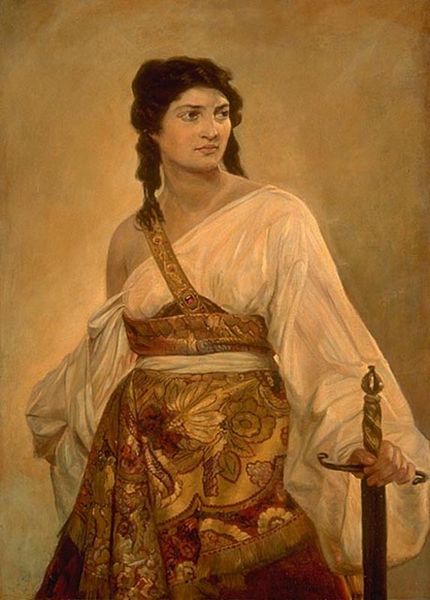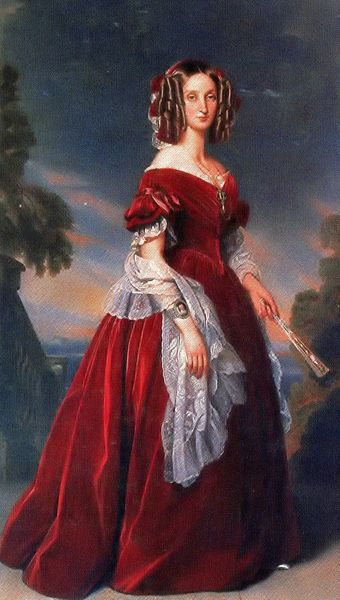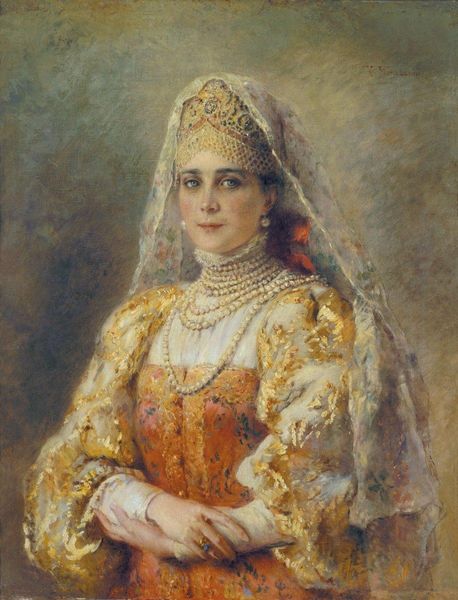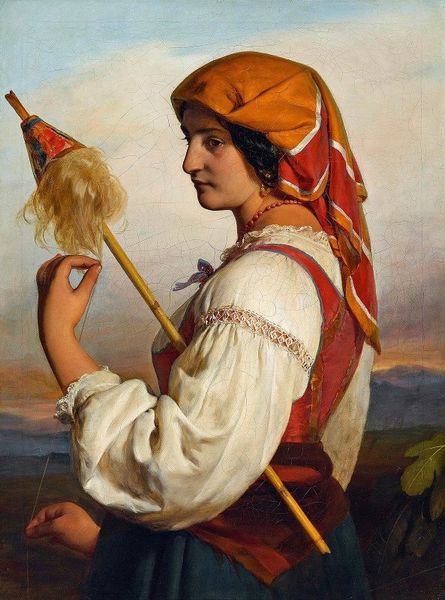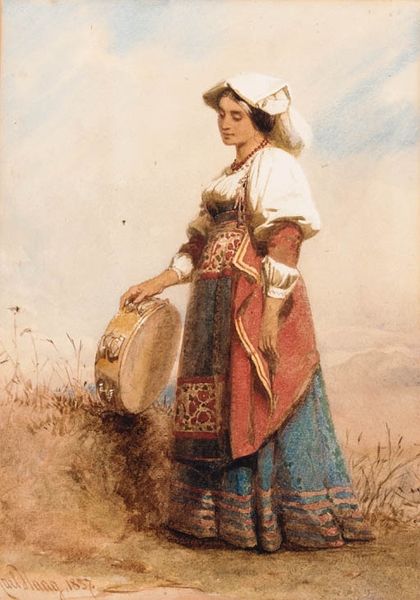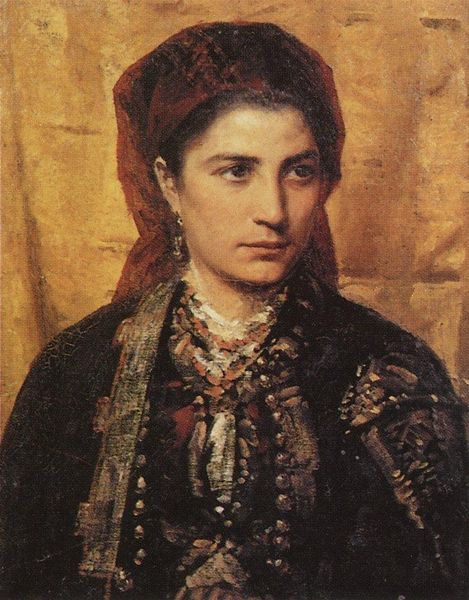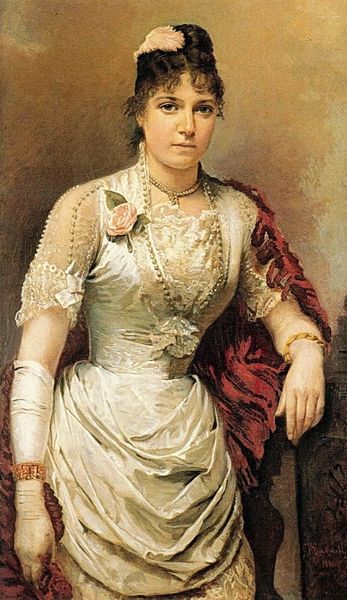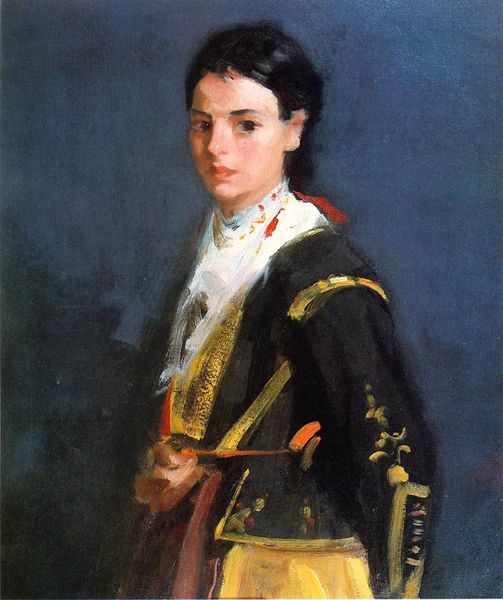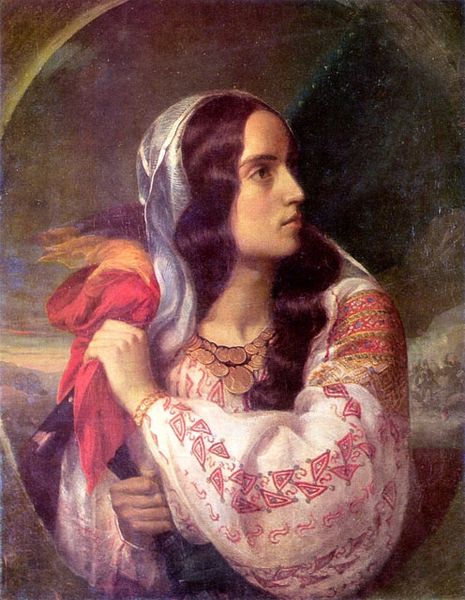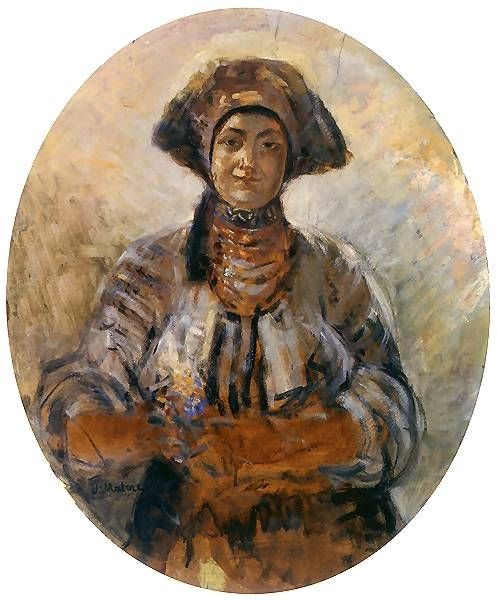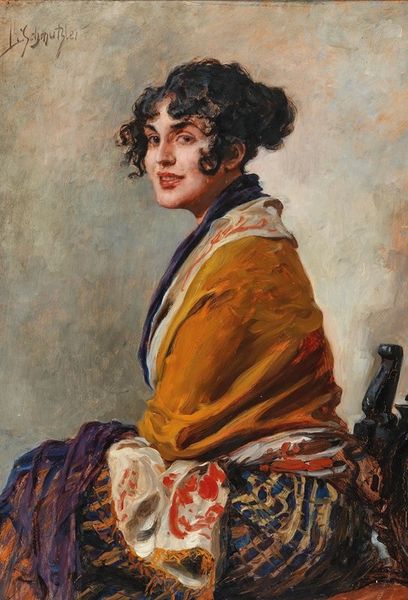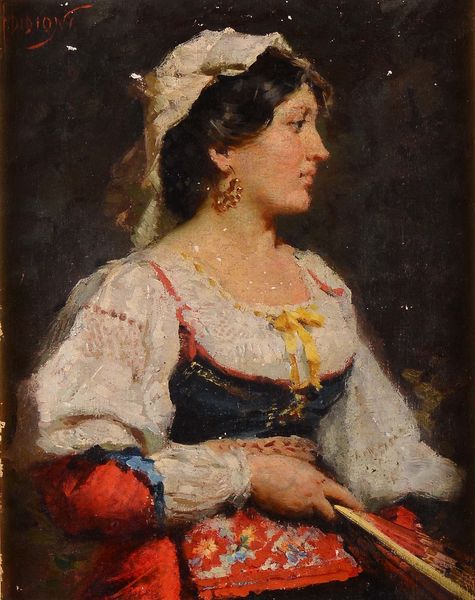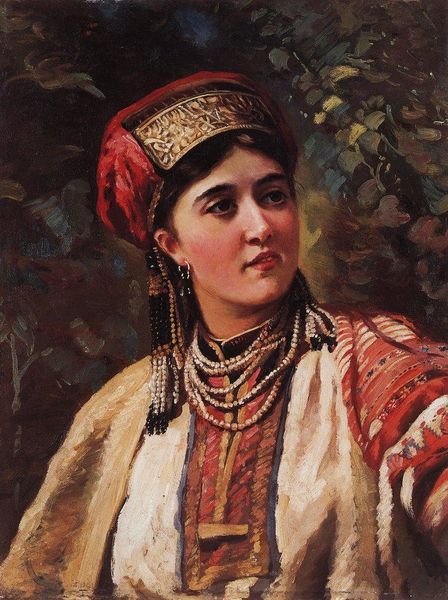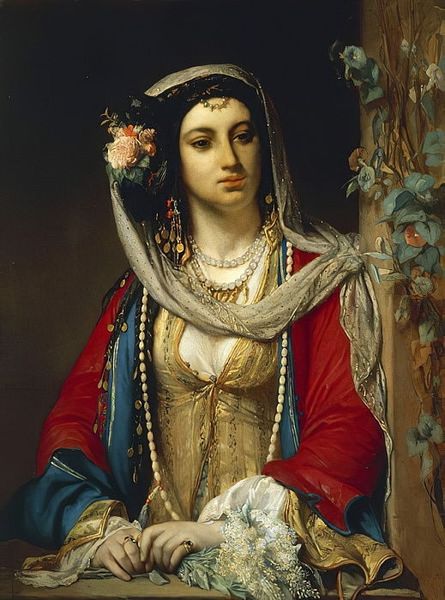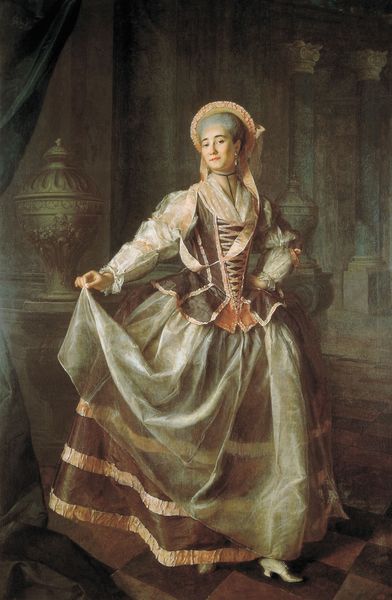
Dimensions: 126.5 x 96 cm
Copyright: Public domain
Editor: Anton Romako’s “The Brigand's Wife,” painted in 1872, presents a woman holding a rifle with a baby in a cot beside her. There’s a distinct feeling of tension and watchfulness emanating from her. How do you interpret the imagery at play in this piece? Curator: This image pulses with symbolic weight. Guns, cradles, landscapes - each resonates with long-held meanings. A gun isn’t simply a weapon, it represents power, protection, but also societal instability, right? Editor: That’s a good point. How do you see that interplay between the woman, her child, and the gun in terms of social memory? Curator: Think of this "Brigand's Wife" as a Madonna figure, but a fierce, protective one, rather than serene and saintly. Notice the landscape pressing in on the scene. The external world isn't just scenery; it embodies forces she is shielding her child from. What is she preserving here by taking up arms? What history is she trying to interrupt, or perpetuate? Editor: It feels like she’s caught between roles, almost… protectress and caregiver all at once. I guess the baby mobile with pearl beads reinforces both motherly affection but also affluence in contradiction with this rough environment. Curator: Precisely! These objects build a narrative around cultural survival and the perpetuation of memory through generations. What do you imagine her life is? What do you feel looking at this painting? The composition encourages a personal reaction but framed within a specific historical context, the tumultuous 19th century. Editor: I initially saw just a portrait, but now I'm seeing a powerful statement about motherhood and resilience amidst hardship, echoing across time. Curator: Indeed. Visual language provides a space to connect, to remember, to negotiate our place in the ongoing human story.
Comments
No comments
Be the first to comment and join the conversation on the ultimate creative platform.
